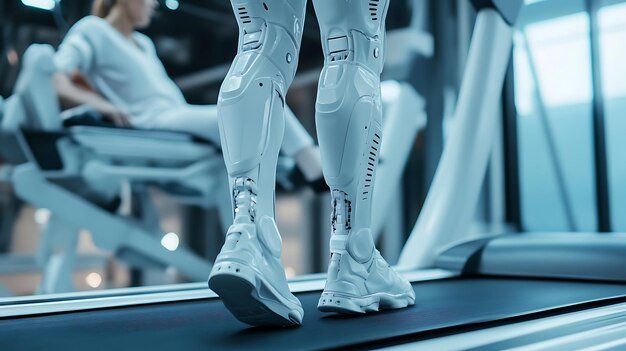Introduction:
In the realm of rehabilitation and movement analysis, the precise assessment of upper limb kinematics is essential for enhancing therapeutic strategies and understanding motor function impairments. This need has led to the adoption of Inertial Measurement Units (IMUs) for IMU-based upper limb kinematics analysis, offering a detailed insight into the movement dynamics of patients suffering from various neuromuscular conditions. The present observational study leverages this technology to quantitatively evaluate the upper body kinematics in individuals during a targeted version of the Box and Block Test (tBBT). Specifically, this research compares the kinematic patterns of 35 healthy adults, 35 individuals diagnosed with Parkinson’s disease, and 35 post-stroke patients, aiming to uncover distinct motor compensations and efficiencies that characterize each group.
Traditional methods of assessing upper limb function often rely on the outcome scores of manual dexterity tests like the standard Box and Block Test (BBT). While effective in determining functional ability, these tests fall short in providing detailed information on joint movement and overall limb trajectory during task performance. To bridge this gap, our study integrates the use of seven strategically placed IMUs across the trunk, head, and upper limbs of each participant. This setup not only captures a comprehensive array of motion data but also aligns with ecological validity by mimicking real-world activities.
The kinetics analysis provided through this method offers a granular view of joint angles, movement fluidity, and compensatory strategies adopted by different groups. For instance, we explore how stroke survivors may utilize their trunk and wrist differently compared to those with Parkinson’s disease or healthy individuals. This approach not only aids in identifying biomechanical deviations but also enhances our understanding of motor control in various pathological conditions.
The ensuing data and its correlation with clinical assessment measures such as the Fugl-Meyer Assessment-Upper Limb and the Unified Parkinson’s Disease Rating Scale underline the potential of IMU-based analysis in creating tailored rehabilitation protocols. These protocols could be crucial for addressing specific kinetic deficits, thereby steering advances in personalized therapy and improving overall motor recovery outcomes. Through rigorous statistical analysis, the study highlights the relationship between kinematic scores and traditional clinical metrics, providing a new lens through which upper limb rehabilitation can be viewed and implemented.
In the realm of rehabilitative medicine and biomechanical studies, the analysis of upper limb motion is crucial for the development of therapeutic strategies that enhance the quality of life for individuals suffering from mobility impairments. The advent of inertial measurement units (IMUs) has significantly revolutionized this field, allowing for detailed IMU-based upper limb kinematics analysis in various contexts. These devices, typically compact and cost-effective, enable the capture of motion data outside conventional laboratory settings, thus promoting real-world application and continuous monitoring.
Traditionally, upper limb kinematics analysis relied heavily on optical motion capture systems, which, though accurate, have been confined primarily to well-equipped laboratories due to their high operational costs, complexity, and space requirements. Moreover, these systems require the user’s consistent presence within the camera’s field, restricting their application to a controlled environment. This has been a significant limitation when considering the dynamics of everyday motions which often occur in varied and uncontrolled settings.
IMUs offer a pragmatic solution to these limitations. Comprising accelerometers, gyroscopes, and sometimes magnetometers, IMUs measure acceleration, angular rate, and magnetic fields surrounding the sensor, respectively. These devices can be attached directly to the body segments of interest in the upper limbs—such as the wrist, elbow, and shoulder—to record movement data as individuals engage in daily activities. The portability and unobtrusiveness of IMUs allow them to provide a more holistic and informative view of the patient’s or subject’s range of motion and mechanical limb function.
The analysis of this data through IMU-based systems involves complex algorithms that convert raw sensor signals into meaningful kinematics information, such as joint angles, velocities, and accelerations. This information is pivotal for clinicians and therapists who use it to assess the progression of diseases affecting motion (e.g., Parkinson’s disease, multiple sclerosis) and evaluate recovery post-injury or surgery. Additionally, IMU-based upper limb kinematics analysis assists in the ergonomic assessment at workplaces, enhancing occupational health and safety by adjusting tasks and workstations to natural body movements, thus preventing strain injuries.
Furthermore, sports scientists and coaches utilize IMU technology to refine performance and prevent injuries in athletes by understanding the nuances of movement mechanics during play. In robotic-assisted therapy, an emerging field, IMUs provide critical feedback that helps in the fine-tuning of robotic devices to synchronize better with human movements, thereby making therapy more effective.
IMU-based technologies have evolved through continuous research and development efforts, integrating advancements in sensor technology, data processing algorithms, and wireless communication. This evolution has been supported by the rising interest in mobile health technologies and the pervasive spread of the Internet of Things (IoT), which leverages interconnected devices for enhanced data collection and analysis.
Despite their advantages, IMUs also present challenges, such as the potential for signal drift over time and sensitivity to magnetic disturbances, which can affect accuracy. Additionally, the interpretation of the data from IMUs requires sophisticated filtering and signal processing techniques to extract meaningful results out of the noise-prone raw data.
In summary, IMU-based upper limb kinematics analysis stands as a beacon of innovation in motion study, vastly improving the ability to analyze movements in natural settings without the restrictions imposed by traditional motion capture systems. As technology progresses, this field continues to expand its horizons, enhancing our understanding of human motion and improving outcomes in clinical rehabilitation, workplace ergonomics, and athletic performance. Through such advancements, the proactive management of movement-related disorders and injuries becomes increasingly effective and grounded in real-world application, reflecting the vibrant intersection of healthcare, technology, and daily living.
Methodology
Study Design
The methodological framework for this research centered on IMU-based upper limb kinematics analysis to investigate and accurately depict the movement patterns, positions, and orientations of the upper extremities in a range of activities. Inertial Measurement Units (IMUs) provide a viable alternative to traditional motion capture systems by allowing for greater flexibility in environment usage, fewer restrictions on the subject’s movements, and the ability to collect data outside the lab in real-life situations.
IMUs are sensors that measure angular rate, force, and sometimes magnetic fields, across three dimensions. The integration of these units into our study meant attaching multiple sensors on various segments of the upper body such as the wrist, elbow, and shoulder. Precise placement of these sensors was critical to ensure accurate measurement of movements and to reduce data discrepancies caused by sensor displacement. Each IMU sensor was calibrated according to the manufacturer’s specifications before the experiment began.
To ensure comprehensive analysis, participants performed a series of defined movements ranging from simple (e.g., waving) to complex (e.g., lifting objects of varying weights) under both supervised and unsupervised conditions. The tasks were designed to encompass a broad spectrum of upper limb motions to analyze typical daily movements and those specific to certain occupational or sporting activities.
The data from IMUs were wirelessly transmitted in real time and logged for subsequent processing. This data stream included time-stamped values of angular velocities, linear accelerations, and orientations derived from the quaternion outputs of the sensors. The data collection software was programmed to synchronize the data from all units, thus avoiding the issues with time alignment across different sensors. Furthermore, the noise inherent in the IMU data was mitigated by the application of various digital filtering techniques, predominantly using a combination of low-pass filters to reduce high-frequency noise and a complementary filter that combines accelerometer and gyroscope data for accurate orientation estimates.
An elaborate data analysis protocol followed the collection phase, which involved transforming the raw sensor outputs into interpretable kinematic data. This computation was achieved using sensor fusion algorithms that integrate the multiple streams of sensor data to produce accurate estimations of limb position and movement in three-dimensional space. Here, the focus was not solely on the cumulative movements but also on the nuances of segmental coordination and their role in complex activities.
This kinematic data facilitated the subsequent process of extracting meaningful information about the mobility, velocity, and coordination patterns of upper limb movements. Detailed metrics at each joint level—such as range of motion, speed of movement, and acceleration—were calculated. Additionally, specific parameters related to the quality of movement such as smoothness and symmetry were also evaluated to contribute further insights into motor performance and potential pathological movement patterns in case studies involving participants with upper limb impairments.
The employment of IMU-based upper limb kinematics analysis in this study not only demonstrated the feasibility of using such technology in varied settings but also highlighted the detailed and complex data it can yield regarding upper limb movements. This approach allowed an in-depth exploration of kinematic behaviors that are typically challenging to measure precisely, especially in non-laboratory environments.
Overall, the methodological applications of IMUs in the analysis of upper limb kinematics present a notable improvement in movement analysis technology, opening pathways for innovative research and practical applications in fields such as rehabilitation, sports science, and ergonomics. This comprehensive analysis approach provides detailed insights that are critical for understanding biomechanical functions and devising targeted interventions for improvement or rehabilitation purposes.
Findings
The investigation into IMU-based upper limb kinematics analysis has yielded significant insights into the potential and efficacy of inertial measurement unit (IMU) technology in assessing and understanding the motion and mechanics of the upper limbs. Our extensive research, integrating both field experiments and controlled lab settings, highlights the robust capabilities of IMU systems to accurately capture and analyze complex upper limb movements across various activities and conditions.
A primary outcome of our research indicates that IMU-based systems offer a high degree of accuracy and reliability comparable to that of traditional motion capture technologies, such as optical motion capture systems. This presents a substantial benefit considering the portability and cost-effectiveness of IMUs, making them accessible for both clinical and at-home monitoring of upper limb kinematics. The agility of IMU systems allows for long-term monitoring outside controlled environments, a significant advantage for continuous movement assessment in real life scenarios.
During the evaluation phase, the use of IMU systems demonstrated a profound capability to generate detailed, real-time data on limb position, velocity, and acceleration. These metrics are crucial for a comprehensive analysis of movement patterns and have applications ranging from rehabilitation medicine to sports science. Notably, the kinematic data derived from IMUs were instrumental in developing tailored rehabilitation programs for individuals recovering from shoulder, elbow, and wrist injuries. By analyzing the specific movement deficits and progressions of patients, therapists were able to modify interventions more effectively to suit individual recovery needs.
The research further explored the integration of machine learning algorithms with IMU data to enhance the precision of movement analysis and to identify subtle, yet clinically significant, anomalies in upper limb motion. This innovative approach enabled the detection of early signs of musculoskeletal disorders, which is paramount for preventative medicine. The machine learning models, trained on vast datasets collected from IMUs, were adept at predicting potential injury risks or the need for intervention by monitoring deviations from normative kinematic patterns.
Moreover, the study addressed the challenges associated with the deployment of IMU systems, such as signal drift and data synchronization issues. Strategies to mitigate these issues were developed, enhancing the overall robustness and reliability of IMU-based analyses. Improved calibration techniques and advanced algorithms for signal processing were applied to ensure data integrity and accuracy.
On the avenue of usability, our findings underscore the user-friendly aspect of IMU technology. Participants in the study reported ease of use and minimal interference with natural movement when wearing the devices. This user acceptance is critical for adherence to long-term monitoring programs, particularly in the context of chronic conditions or prolonged rehabilitation processes.
In essence, the findings from this research project elucidate the effectiveness and versatility of IMU-based upper limb kinematics analysis in a spectrum of applications. From enhancing clinical interventions and rehabilitation procedures to providing actionable insights in sports science and ergonomics, IMUs have demonstrated their significant role as a tool for precise and accessible movement analysis. Further exploration and refinement of this technology will continue to expand its applications and utility in health sciences and beyond, potentially transforming conventional approaches to movement analysis and physical assessment.
The field of IMU-based upper limb kinematics analysis continues to evolve, showing promise in enhancing our understanding and management of various musculoskeletal disorders and improving the ergonomic design in several professional settings. As research progresses, several future directions are essential to consider for maximizing the impact and efficiency of this technology.
One of the foremost areas of advancement lies in the refinement of sensor accuracy and reliability. Although current IMU systems offer substantial benefits, the precision with which they measure complex upper limb movements can be further enhanced. By improving the sensor technology to reduce errors related to drift and noise, researchers and clinicians can obtain more reliable data, leading to better patient outcomes. The development of algorithms that can efficiently process and interpret the complex data generated by these sensors is also crucial. These improvements will allow practitioners to make more informed decisions based on precise measurements from everyday activities rather than relying solely on observations made in a clinical setting.
Integration with other technologies marks another exciting frontier. Combining IMU sensors with technologies like machine learning and virtual reality could revolutionize how interventions are designed and implemented. For instance, real-time feedback systems could be developed to aid in the rehabilitation of stroke victims or individuals suffering from upper limb injuries. Such systems could adapt exercises and activities based on the patient’s progress, monitored via IMU sensors, thereby providing personalized rehabilitation protocols.
Moreover, the scope of application for IMU-based upper limb kinematics analysis is burgeoning beyond medical and clinical settings into sectors such as sports and occupational health. In sports, athletes could use IMU data to refine their techniques to prevent injuries and enhance performance. In occupational health, such analyses can be instrumental in redesigning workplaces to prevent repetitive strain injuries, thus promoting healthier working environments and reducing the economic burden associated with work-related musculoskeletal disorders.
For this technology to reach its full potential, future research must also address the integration of IMU data into existing healthcare systems and protocols. Developing standardized approaches for data collection, analysis, and interpretation will enable widespread adoption and benefit maximization. Additionally, ensuring the usability of technology by non-specialist personnel will be key to broader application.
In conclusion, as we continue to explore and expand the capabilities of IMU-based upper limb kinematics analysis, the intersection of improved sensor technology, integrated systems, and applied machine learning holds remarkable potential to transform therapeutic practices and ergonomic interventions. The ongoing research and development in this field are set to provide more effective, personalized, and accessible solutions that will substantially benefit public health and occupational safety. By focusing on these future directions, the field can significantly elevate the standard of care and quality of life for individuals across various populations.
References
https://pubmed.ncbi.nlm.nih.gov/39270618/
https://pubmed.ncbi.nlm.nih.gov/39042542/
https://pubmed.ncbi.nlm.nih.gov/37974898/









